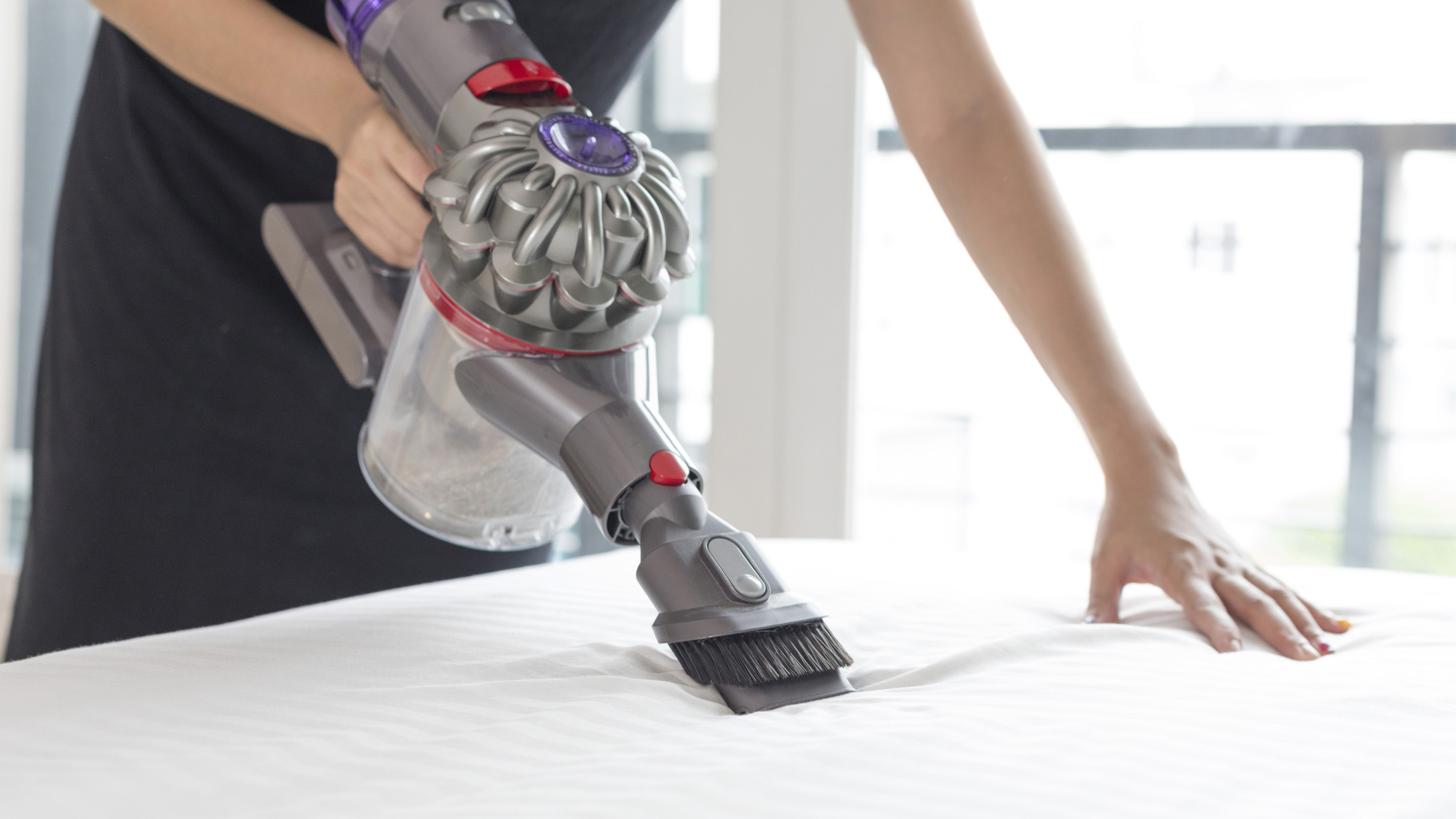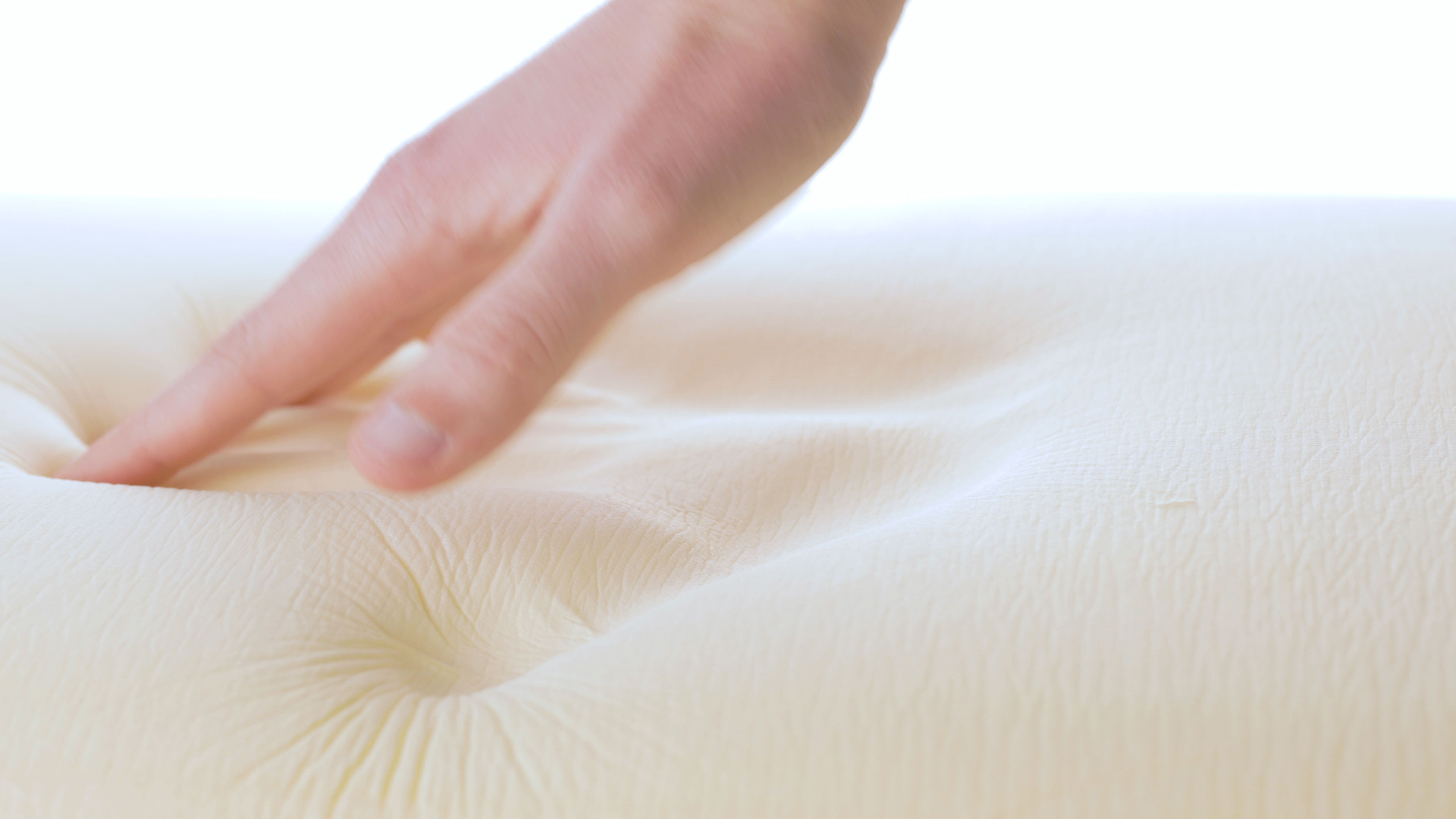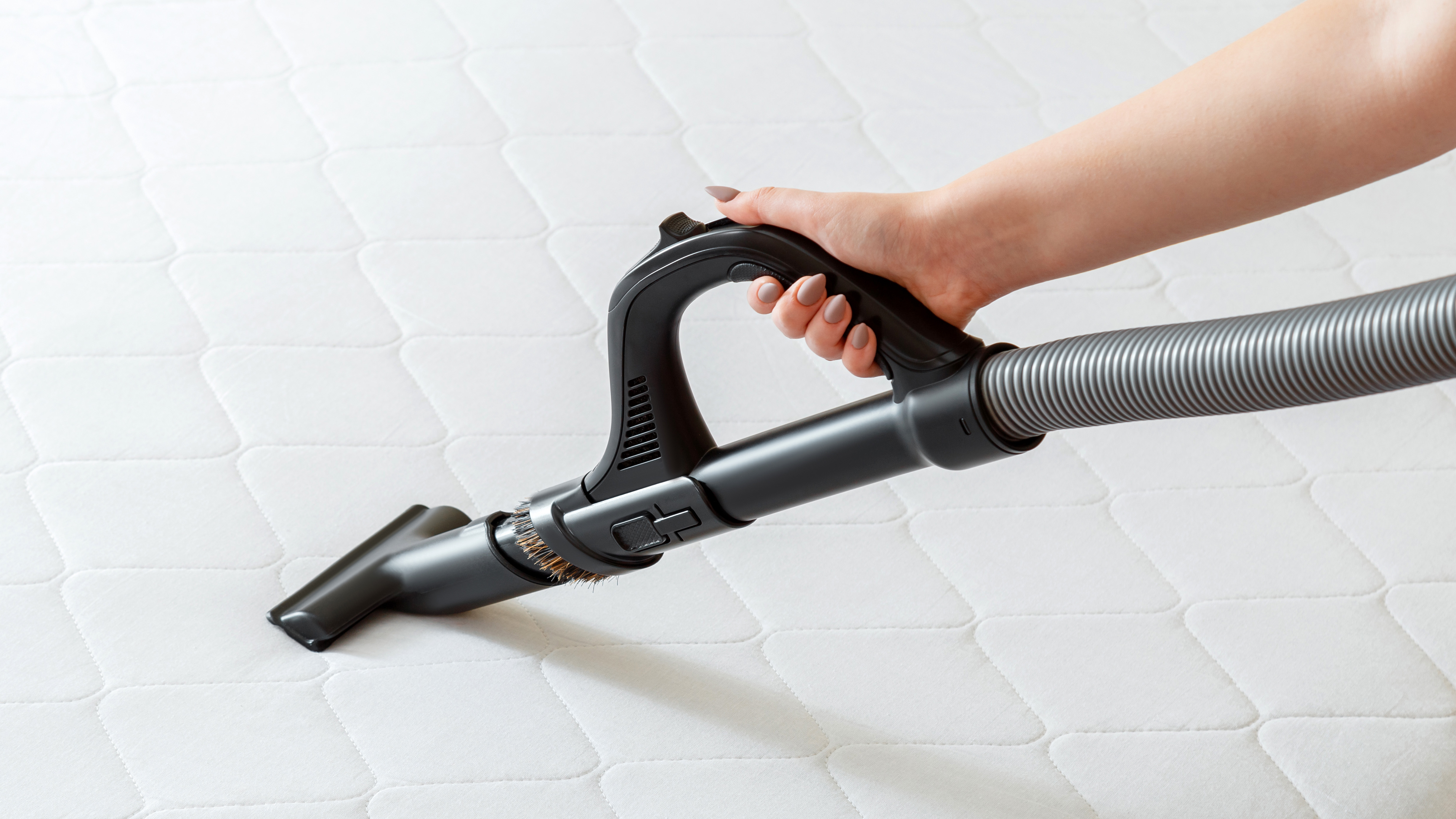Cleaning a mattress — 5 costly mistakes to avoid when deep cleaning a bed
Leaving mattress stains to rot is just the tip of the iceberg

Cleaning a mattress isn't rocket science, but there are certain things you should avoid otherwise you could damage your bed to the point where it needs replacing long before it reaches the end of its natural lifespan. So what are these costly mattress cleaning mistakes? We'll run through the top five right here so you can better care for and protect your bed.
And it doesn't matter if you have a budget bed or you've invested in one of the very best mattresses for your sleep style and body – all beds gets dirty. It’s therefore important to clean them regularly to stop the build-up of dust mites, sweat, dead skin, other substances and even bed bugs, all of which can lead to the wear, tear and eventual decline of your mattress.
But when it comes to deep cleaning a mattress, there are some things that should be avoided at all costs, so let's look at those now. And if after reading you decide your bed has seen better days, the forthcoming Memorial Day mattress sales are a great time to get a top-rated mattress in a box for less.
Today's 7 best mattress sales
- DreamCloud: just $665 for a queen hotel-style mattress
- Nectar Sleep: up to 40% our No 1 memory foam bed
- Saatva: save 15% on luxury US-made mattresses
- Avocado Mattress: get 15% off 100% organic beds
- Casper Mattress: up to 25% off budget and cooling boxed beds
- Emma: up to 55% off affordable foam and hybrid beds
- Helix: 30% off Luxe beds + free pillows "MEMDAY30"
Cleaning a mattress – 5 costly mistakes to avoid
1. Leaving stains to rot
Stains don’t just appear overnight, instead, they are a build up of sweat, sebum, spills, urine, dead skin cells and dirt. That’s why it’s important to keep to a regular mattress cleaning schedule.
However, once you notice a stain it’s even more important to act fast and not ignore the problem. The longer a stain is left the harder it is to lift from the fabric. This means that the only way you’ll be able to lift the stain is to use harsher cleaning products which can also cause damage to the fabric and fibres of your mattress.
Leaving stains can also become a breeding ground for dust-mites that love to feast on set in dead skin cells, dust mites can trigger allergies and asthma, making for a stuffy and uncomfortable sleep.

2. Using too much water (and not letting it dry)
When it comes to cleaning your mattress it's very important not to saturate the mattress surface with water or cleaning solution. Most mattresses, especially those with foam or spring cores can lose their supportive structure when they get wet, this means that it will start to sag and become lumpy which will lead to aches and pains.
Sign up to get the BEST of Tom's Guide direct to your inbox.
Get instant access to breaking news, the hottest reviews, great deals and helpful tips.
When a mattress gets too wet it can be difficult to dry thoroughly and damp mattresses are a breeding ground for mold and mildew. Mold releases spores which can irritate your lungs and cause respiratory issues so your haven will quickly turn into a health hazard.
And of course, we all know what it’s like when we accidentally forget to take the laundry out of the machine, it stinks, if your mattress gets too wet then it can lead to unpleasant odors that become impossible to lift.
3. Using harsh chemicals
Before you start cleaning your mattress one of the first things you need to do is check the care instructions. What your mattress is made from can make all the difference when it comes to knowing what products and solutions you can use to clean your mattress.
It’s very important to avoid all harsh chemicals such as bleach when cleaning your mattress. Harsh chemicals can break down the materials in your mattress, especially any foams or delicate fabrics which will lead to a shorter lifespan for your bed.

Also, it’s not just about the effect on your mattress, many hard cleaners contain VOCs (volatile organic compounds) that are released in to the air, this can irritate your lungs when you breathe them in as well as leave a residue on the mattress which can irritate skin and worsen allergies.
When it comes to cleaning your mattress there are many safe and effective methods you can use such as using water and white vinegar for spot cleaning stains.
4. Beating a mattress instead of vacuuming it
You may have seen on social media that a good way to remove dust and dust mites from your mattress is to get up and jump on it. Well, aside from the fact that could damage both your mattress and your bed, it’s a really bad idea. The same as if you were going to beat the surface of your bed to get rid of the dust.
By following this method you’ll just be pushing the dust up into the air for you to breathe in, creating a dust bomb in your own bedroom. And of course, where does the dust go when it starts to settle again? That’s right, back on your mattress.
To effectively get rid of dust on your mattress vacuum the surface on a regular basis and use the upholstery attachment to get deep into the corners, seams and tufts to remove all traces of dust.
5. You're using bleach on a foam mattress
Bleach is a big no-no when it comes to memory foam mattresses for a few reasons. For a start bleach is such a harsh chemical that it will break down the structure of the memory foam. This will then cause your mattress to crumble, crack and lose its contouring power so it’ll be less supportive and very uncomfortable.

Bleach also can discolour your mattress, even if you use it on a white mattress it will start to fade or turn yellow. Bleach is also very ineffective at lifting stains, in fact, using it on your mattress could actually cause stains.
Using bleach on your memory foam mattress can also be hazardous for your health. The fumes could cause irritation to your lungs and any bleach residue left behind may cause your skin to become irritated. So if you’re even thinking about picking up the bleach then stop and look at other ways to clean your memory foam mattress.
How often should you clean a mattress?
- Vacuum your mattress once a week to prevent dust mites
- Deep clean it every six months...
- ...or every three months if you have dust allergies
If you want to keep your mattress in tip-top condition then it’s important that you set up a regular cleaning schedule. Knowing how to clean a mattress properly will also give you a good idea of what jobs you need to do and when.
We recommend vacuuming your mattress every week and getting in to a habit of doing it when you change your bedding. This will help to reduce the amount of dust, dirt and dander that gets trapped in the fabric. When it comes to deep cleaning your mattress, this should be done every six months. However if you suffer from allergies you may find it beneficial to undertake a deep clean every three months.
Other reasons to clean a mattress regularly include to keep it free of stains and odors. Sweat and body oils build up as we sleep, which can lead to yellow stains on your mattress. Whilst these stains may seem harmless they can harbour bacteria and if left untreated can damage the fibres of the mattress which will cause it to lose it’s supportive feel.
How often should you vacuum a mattress?
- Vacuum once a week after stripping the bedding
- Use an upholstery attachment and clean it before use
- Some experts advise having a separate vacuum just for your bed

One of the best ways to stay on top of cleaning your mattress is to vacuum it on a regular basis. Vacuuming your mattress is the most effective way of removing dirt, dust, pollen, dander and other allergens that may be lurking on the surface and within the fibers, like dust mites and bed bugs.
It’s best to vacuum your mattress at least once a month. However, we recommend getting into a weekly routine of vacuuming your mattress when you change your bedding, especially if you have allergies.
In the spring and summer months, you may want to vacuum more often since there’s a higher risk of pollen and allergens flying around. It’s also worth investing in a mattress protector then you could leave it longer between vacuums but try not to leave it more than a month.
Should you flip or rotate a mattress when cleaning it?
- Rotate your mattress every 3-6 months
- This helps spread out wear and tear
- Never flip a hybrid mattress
This depends on what kind of mattress you have. Both flipping and rotating can help to prevent wear and tear on your mattress. You should flip or rotate your mattress at least every 3-6 months so it makes sense to do this whilst you’re undertaking your deep clean, that way you keep on top of when you last did it and know when you need to do it again.
However, whilst almost all mattresses benefit from being rotated, not all mattresses are flippable. Most mattresses including the best hybrid mattresses and the best memory foam mattresses are designed to be single-sided, and flipping them can damage the comfort layers which have been designed for a specific orientation.

Always check with your specific manufacturer for the recommended frequency of flipping or rotating and also familiarize yourself with the specific cleaning instructions too.
How to deodorize a mattress
- Use baking soda to get rid of mattress smells
- Use a flour sifter to spread baking soda evenly
- Always leave it for a couple of hours before vacuuming away
Sweat, sebum and dead skin cells, all build up and eventually can start to cause a nasty odor. So if your mattress is starting to smell a little funky then it’s best to take action sooner rather than later. Thankfully, it’s not too much of a problem as getting rid of smells from your mattress is pretty easy. It’s best to try and deodorize your mattress at least once every six months, if you sleep hot and find yourself sweating a lot at night, do this more often.
All you need is some baking soda, essential oils and a vacuum cleaner. Strip your bed and place your sheets on a hot wash. Whilst your bed is stripped give the surface a thorough vacuum. Next, take some baking soda, add a few drops of your favorite essential oils and sprinkle on the surface.
A really good tip for this is to use a flour sifter so you get a nice even layer of baking soda. Leave this on your bed for at least 2 hours, but the longer you can leave it the better. Then once that time has elapsed just vacuum the surface again making sure to remove all the baking soda.
This works as the baking soda reacts with the enzymes within the mattress that cause the smells. It neutralizes the smells and can also help lift any stains that may be present too. Good essential oils to use are lavender for relaxation, lemon for freshness and chamomile for calming.
How to protect a mattress after you’ve cleaned it
- Always use a mattress protector
- Look for one with waterproofing if you have a young child
- Bamboo mattress protectors help regulate temperature
The most effective way to protect your mattress after you’ve cleaned it is to use one of the best mattress protectors. A mattress protector provides a barrier between you and the surface of your mattress. They work to keep dust, dust mites, spills, accidents and allergens away from your mattress. The good news is that they can also be machine-washed so it’s easy to keep clean and hygienic.
When looking for a mattress protector look for one that is waterproof or water-resistant, this will protect your mattress against any liquids. And also take a close look at the materials and try to select one made from cotton or bamboo which is soft to the touch and breathable meaning you won’t risk overheating at night.

Rachael is a freelance journalist based in South Wales who writes about lifestyle, travel, home and technology. She also reviews a variety of products for various publications including Tom’s Guide, CreativeBloq, IdealHome and Woman&Home. When she’s not writing and reviewing products she can be found walking her Sealyham and West Highland terrier dogs or catching up on some cringe-worthy reality tv.
